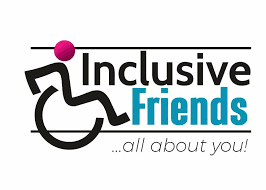In the remote village of Pygba Sama, nestled just 14.2 kilometers from the grandeur of the Presidential Villa in Abuja, a painful and deeply troubling tradition persists – breast ironing, also known as breast flattening.
This archaic practice, hidden away from the global spotlight, serves as a haunting symbol of the broader issue of gender-based violence, encapsulating the extraordinary lengths to which women and mothers are willing to go to protect their daughters from the pervasive threat of sexual violence.
In this illuminating article, we embark on a journey to expose the grim reality of this clandestine custom, shedding light on its prevalence, its far-reaching consequences, and the profound impact it has not only in Pygba Sama but also in countless communities across the world.
Breast ironing, a practice shrouded in secrecy and perpetuated through generations, involves the application of heated objects, often stones or spatulas, to the developing breasts of young girls.
The aim? To suppress their natural growth, rendering them less conspicuous and, in the misguided belief of some, less likely to attract sexual predators.
This agonizing ordeal, which can begin as early as puberty, carries with it not only the physical pain of scalding flesh but also the psychological scars that can last a lifetime.
While this custom may appear as a localized issue, its roots delve deep into the broader problem of gender-based violence that knows no borders.
The desperation of mothers to protect their daughters is a testament to the pervasive threat faced by women in societies where their safety is often compromised. It is a stark reminder of the lengths people will go to shield their loved ones from harm, even if it means perpetuating a harmful tradition.
In Pygba Sama, as in many other communities worldwide, breast ironing is a complex issue intertwined with cultural beliefs, poverty, and limited access to education and healthcare. It is often seen as a desperate measure in the absence of adequate protection and support systems.
It is crucial to recognize that the women who practice breast ironing are not the villains in this story but victims themselves of deeply ingrained societal norms.
To truly address this issue and its implications, we must delve into its prevalence not just in Pygba Sama but also in various regions across the globe.
The shadows of breast ironing extend beyond this remote village, casting a dark cloud over countless communities where the safety and well-being of girls remain precarious.
In the following sections of this article, we will explore the prevalence of breast ironing in different parts of the world, the reasons behind its persistence, the physical and psychological consequences it inflicts on its victims.
By bringing this issue to the forefront and fostering a global dialogue, we can collectively work towards eradicating the practice of breast ironing and, in doing so, offer a glimmer of hope for the future generations of girls who deserve to grow up free from such brutality.
A Tradition Born from Fear
The fear of sexual violence and molestation by predatory men has shaped the culture of protection for underage girls in Pygba Sama, Kpaduma II, and a few other communities in the Federal Capital Territory (FCT). In the quest to safeguard their daughters from unwanted male attention, pregnancy, and rape, women have turned to breast ironing.
This painful and archaic practice involves massaging or pounding the breasts of young girls with heated or hard objects, with the aim of either delaying their development or making them appear less “womanly.”
Breast ironing is a deeply concerning issue that transcends geographical boundaries, impacting countless women across the globe. While it is widely associated with Pygba Sama and the FCT, its prevalence is not limited to these regions.
According to alarming statistics from the United Nations, approximately 3.8 million women worldwide have endured the horrors of breast ironing, an often under-reported crime deeply intertwined with gender-based violence.
What makes this practice even more disheartening is that it is frequently carried out by individuals who should be the protectors of these young girls – their own family members. Shockingly, mothers are found to be responsible for this cruel act 58% of the time.
This highlights the urgent need for comprehensive awareness and education initiatives aimed at transforming the perceptions and behaviors of not only the girls but also the very people meant to nurture and safeguard them.
Although the epicenter of breast ironing is often traced back to Africa, particularly in countries like Cameroon, where estimates indicate that between 25% and 50% of girls may be affected, its sinister reach extends far beyond the African continent.
It is a global challenge that demands collective efforts to raise awareness, advocate for policy changes, and provide support to the survivors. Only through a united front can we hope to eradicate this harmful practice and protect the rights and dignity of women and girls everywhere.
The consequences of breast ironing are far-reaching and devastating. Beyond the physical pain and trauma inflicted on young girls, this practice exposes them to severe health risks.
The use of crude instruments such as spoons, brooms, stones, and even calabash parts, combined with insufficient aftercare, puts girls at risk of cancer, abscesses, infections, cysts, and even the complete disappearance of one or both breasts.
The violation of a young girl’s physical integrity through breast ironing leaves scars that last a lifetime.
A Call for Awareness and Action
While the horrors of breast ironing continue to affect countless lives, it remains largely concealed from the global conscience. To combat this menace, It’s imperative to shed light on breast ironing through education and awareness campaigns, both within affected communities and globally.
Legislative Action: Governments must enact and enforce laws to protect girls from this form of abuse, ensuring that those who perpetrate breast ironing face legal consequences.
Support and Counseling: Survivors of breast ironing require emotional and psychological support to heal and recover from their traumatic experiences.
Empower Girls: Empowering young girls with knowledge about their bodies, self-esteem, and their rights can be a powerful deterrent against breast ironing.
Conclusion: Breast ironing is a tragic manifestation of the lengths to which mothers are willing to go to protect their daughters from harm. However, it is a harmful and dangerous practice that perpetuates cycles of pain and suffering.
Pygba Sama’s story is just one chapter in the global struggle against breast ironing, a menace that demands our collective attention and action. By raising awareness, implementing legal measures, providing support, and empowering young girls, we can work towards eradicating this practice and ensuring a safer, more equitable world for all.


























